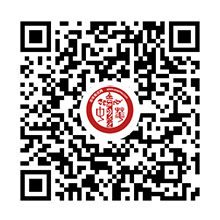
英译汉
Industrial Design
The industrial design is the art and science involved in the creation of machine-made products by large-scale industry for mass distribution'. It is concerned with aesthetic appearance, especially in consumer goods, as well as with functional efficiency.
The term industrial design was originated in 1919 by the American industrial designer Joseph Sinel (1887-1975). Initially, industrial designers dealt exclusively with machine-made consumer products. Eventually, however, the scope of the profession2 enlarged to include the design of capital goods, such as farm machinery, industrial tools and transportation equipment, and the planning of exhibitions, commercial buildings and packaging3.
Under prevailing standards of design, a product should have beauty of line, color, proportion, and texture; high efficiency and safety of operation; convenience or comfort in use; ease of maintenance and repair; durability; and expression of function in terms of form. The relative importance4 ofany of these standards may vary depending on the object. Thus, line and proportion may be more desirable in a sofa than in a tractor, where durability and easy maintenance may be paramount5. A consideration basic to all good design is the factor of realistic cost. Thus, effective industrial design requires, besides artistic ability, combined knowledge of engineering principles and materials, production techniques and cost, and marketing conditions.
The industrial designer must be concerned not only with product design but with the conditions under which products are sold. In planning retail stores and display areas, for example, the industrial designer works with the architect to increase the revenue-producing interior space and to create arrangements and atmosphere conducive to sales. Industrial designers also work to facilitate the profitable operation6 ofrailroad stations, airports, hotels, shopping centers, exhibitions, restaurants, public auditoriums, television stations, and offices.
Every design problem requires special procedures, timing, and techniques, but there is a general routine applicable to all7. After the industrial designer is informed of the needs of the client - including data on the intended market for the product, budget allocation, and company policy and equipment - specialists associated with the designer conduct a study of competitive products and an extensive field survey of the manufacturer's plant. A design program is planned, and preliminary designs of the proposed product are then sketched on the basis of the available plant facilities. Rough sketches are chosen for further refinement and study, and the client is then presented with design studies8, often in the form of a small model or of a mock-up. Following the selection of the approved design, working drawings indicating the choice of materials and the specifications for finishing and assembly are prepared. A handmade working model is then manufactured and submitted to the client for approval. In the case of an automobile, for example, one or several are handmade and tested at proving grounds before final machine dies are ordered and production begins. 9
The industrial designer is essentially the creator of a pattern to guide the operations of skilled persons or machines. The development of industrial design leads to the creation of new procedures in order that the modifications in the design may be molded directly from the old products. Another industrial-design method is based on the fact that small models do not reflect accurately the design characteristics of the full-scale product. Distortion often occurs in magnification as a result of highlights and shadows that change basic spatial relationships. 10 To view the design in full scale, the profession employs a photographic system in which a small drawing is projected to full scale on a section of a wall. Revisions of the design are then made directly on the wall projection by the industrial designers.
A common concern of the profession is how to adapt new technology, with its benefits and hazards, to human needs. In a fast-growing world economy11 industrial design is also challenged to find ways of influencing purchasing based on considerations other than necessity of replacement of a product due to normal wear and tear. One trend, which is inherent in the field of fashion where frequency of buying is determined by frequency of change in taste, is known as artificially accelerated obsolescence. This trend became more prevalent, despite strong criticism, and has been seen in other lines of products such as automobiles and large home appliances. Nevertheless, it is found justifiable for disposable products in the health and hygiene industry.
热点试题1:2018-2012年翻译资格考试catti二级笔译真题汇总 
热点试题2:2019年catti二级笔译模拟试题18篇汇总
热点试题3:2019年翻译资格考试中级笔译练习题20篇
翻译资格考试复习有问题?不知道该从哪里开始下手?欢迎加入交流群540643802,  或者扫描下面的二维码进群。
或者扫描下面的二维码进群。


